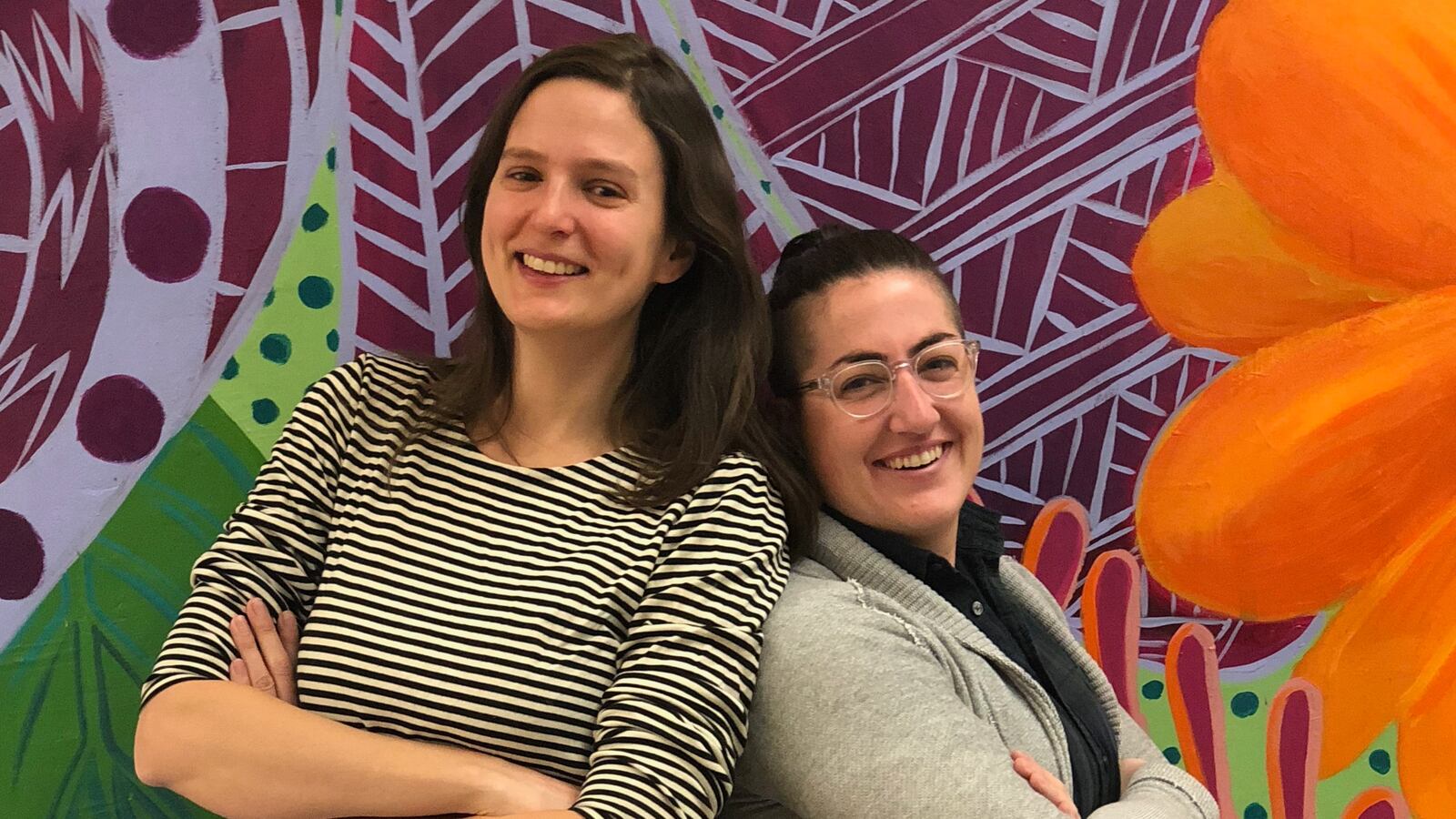Eleanor Vierling and Kaitlin Ruggiero relish a boisterous classroom. And with more than 30 students in most of their classes, they usually get just that.
The two math teachers at Brooklyn’s High School of Telecommunication Arts and Technology believe students learn best when they’re bouncing ideas, equations, and questions off each other.
“It’s important that the students recognize that everyone in the room is someone who has knowledge,” Ruggiero said.
Together Vierling and Ruggiero represent one of the two teacher teams Chalkbeat readers chose to participate in the first-ever Great American Teach-Off. The live event, which debuts at the SXSW EDU conference March 7, is designed to elevate the craft of teaching and showcase the many decisions that go into just one lesson.
Each team of teachers will demonstrate a mini-lesson on stage in front of a panel of judges and a cheering audience. A lively discussion among judges, coaches, and the teacher teams following the lessons will help attendees “see” teaching with new, clearer eyes.
Before Vierling and Ruggiero head to Austin, we caught up with them to discuss the Teach-Off and their teaching philosophy. This interview has been edited for clarity and length.
What inspired you to apply for the Teach-Off?
ELEANOR: I follow Chalkbeat on Twitter. And right after I saw the Teach-Off on Twitter, I texted Kaitlin and asked her if she wanted to do it with me. We both look for ways to make our jobs fun and challenging. You teach for 180 days — that can be isolating. It’s good to find ways to shake it up a bit. And we thought the Teach-Off would be a way for us to show other people all the decision-making that goes behind the scenes of teaching.
Plus, this is going to become a long-running reality TV show, right?
KAITLIN: You’d make such a great character.
How do you describe your teaching style?
KAITLIN: I think it’s really important for students to figure out strategies that work for them. That’s something I didn’t get to do a lot as a student. Back then, there was a lecture and just one way to solve the problem. I didn’t appreciate that as a student. So, something I’m conscious about as a teacher is to make sure my students have the confidence to try to solve a problem different ways.
ELEANOR: In a similar way, we have student-centered philosophies. If students aren’t understanding, I won’t plow through the lesson. I never say, “Just listen.” I won’t impose something that isn’t working. I’m always trying to be creative and come up with different ways to come at the same subject.
How do you two currently work together?
ELEANOR: We’ve pushed for our math department to meet on a daily basis. We’ve never co-taught, but we’ve gravitated toward each other because neither of us uses the exact same stuff from the year before.
KAITLIN: We also are conscious of what we’re doing in the courses that line up. This year, Ellie is teaching pre-calculus. So many of the students she’s teaching will move to my calc class next year. Being aware of what’s going on in her classroom is helpful.
ELEANOR: We’re both interested not just in what we’re teaching but how we’re teaching.
Describe your classroom?
ELEANOR: They’re packed full of students. I have one class with 34 students and one with 37.
KAITLIN: I have classes with more than 32.
ELEANOR: Both of our classrooms have lots of opportunities for students to talk. We’re the facilitators, not the deliverers of information. It’s not one-directional.
How do you manage that many students?
KAITLIN: It’s important that the students recognize that everyone in the room is someone who has knowledge. Just because I’m the teacher in the room doesn’t mean I have to be the expert. What my students bring into the room is just as valuable as what I bring into the room. We’re hanging on each others’ words.
What do you expect the audience to see at the Teach-Off?
ELEANOR: We don’t really know what’s going to happen. I can see moments where we’ll have to talk to each other and figure out which ideas we’re going to share out. There will be teacher-to-teacher talk, happening live.
KAITLIN: We’ll give students something to do and then circulate. Part of the instructional goal is to highlight misconception and highlight structure. It’s OK for there to be a misconception that’s shared with the whole room. That’s an opportunity for learning. Someone might say that’s wrong and it shouldn’t be shared. But it should.
What’s the best advice you’ve received about teaching?
KAITLIN: I remember my first year teaching: I was teaching two different classes. It was really isolating and overwhelming. My mentor, she basically said, “Every day isn’t going to be your best day at work.” She saw how much time I was spending planning every lesson. She said, “Set an alarm. Give yourself some time, and stop making changes and edits all night. Commit to something and try it. If it doesn’t go good in the morning, you change by the afternoon.”
ELEANOR: All assessments are formative. Any assessment is an opportunity to learn.
What else would you like to share?
ELEANOR: I’m 6’2”.
KAITLIN: I’m not.


